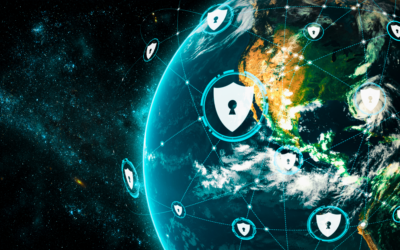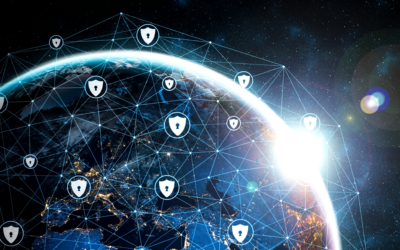Enterprises today face a swirling and ever-intensifying storm of cyber threats. These threats go far beyond disclosed software vulnerabilities and CVEs. Misconfigurations from complex technologies open doors for attackers. Compromised credentials and excessive user permissions enable lateral movement. The list of issues to be dealt with goes on and on.
Legacy vulnerability management tools are designed to address CVEs but fall critically short of providing coverage beyond that. In 2023, more than 28902 vulnerabilities were identified, 3821 more than were identified in 2022. This trend has been repeated yearly, with more CVEs identified in 2022 than in 2021. And though the number of issues needing triaging and addressing continues to climb, the capacity to address them has not necessarily increased.
Moreover, CVEs only represent a fraction of the issues that can put assets at risk. Issues such as weak credentials, misconfigurations, and other weaknesses account for most of the issues that can put organizations at risk.
While security tools churn out their lists, attackers choreograph their way through the environment. They are armed with patience, persistence, and intelligence to eventually merge exposures to reach their objectives. Defenders, meanwhile, are stuck playing whack-a-mole against the latest threats rather than dismantling the pathways sustainably. This asymmetry is difficult to overcome with traditional approaches.
Continuous Threat Exposure Management – A New Approach
Gartner’s Continuous Threat Exposure Management (CTEM) framework aims to fix this through a set of processes and capabilities that allow enterprises to continually evaluate the accessibility, exposure, and exploitability of their assets. CTEM offers a real methodology to address a list of growing problems, and organizations should become familiar with its advantages as they plan their budgets, procedures, and strategies in 2024 and beyond.
Read More: Protect Your Manufacturing Supply Chain from Cybersecurity Risks
The Stages and Benefits of CTEM
CTEM strengthens cyber resilience from the inside out by leveraging 5 steps:
- Scoping, to define business-critical assets, systems, and processes requiring protection.
- Discovery of all exposures across the infrastructure including vulnerabilities, misconfigurations, risky identities, etc.
- Prioritization analyzes exposures based on exploitability, prevalence, and potential business impact to guide the improvement plan.
- Validation confirms that exposures could truly be exploited in the organization through simulations.
- Mobilization drives team collaboration to reduce risk by implementing controls, processes, and technology.
The iterative CTEM process involves continual discovery, prioritization, and remediation activities. However, unlike traditional vulnerability management, which loses context once issues fall off the latest scan reports, CTEM maintains persistent recall of the environment. Progress towards risk reduction is measurable regardless of how threats evolve.
Proactively validating, prioritizing, and remediating exposures also enables organizations to outpace attacker dwell time inside environments. Defenses are constantly strengthened rather than allowing new exposures to accumulate. Further, because CTEM continually relates risk to business priorities defined during scoping, security initiatives stay aligned with reducing business disruption. Exposure management becomes a business enabler.
A Common Language and Comprehensive Approach
Another prominent benefit of CTEM is creating a common language around risk. Traditional vulnerability management leaves organizations unable to model the interconnectedness of exposures or understand the resulting business risk. Security teams cannot convey severity in a way that resonates with IT and the business, so both groups lack the context to make data-driven decisions on resource allocation.
Security teams can align remediation with exploitation likelihood and business criticality by providing a risk-based model to understand exposures. The data dispels uncertainty around securing complex hybrid environments and grants actionable insights, enabling teams to strengthen defenses with confidence strategically.
The “continuous” element of CTEM refers to a give-and-take relationship between the CTEM program and the associated risk remediation efforts, wherein data stemming from both aspects inform processes to enable increasingly optimal decisions about managing exposure risk. It also refers to the fact that a core element of the approach lies in continuously monitoring, assessing, prioritizing, and remediating security issues.
Effective Approaches and Capable Technologies
At its core, CTEM is about continually reducing risk and improving posture measurably. This is done by expanding vulnerability management programs to include misconfigurations, identity issues, unmanaged devices, etc. To understand attack surfaces, attack paths to critical assets, and overall risk, all these environments must be considered holistically—how an attacker will view them.
Read More: 3 Ways CSOs Can Prevent Internal IT Outages, Minimize Impacts
By leveraging attack graphing, automated security validation, and exposure assessment capabilities, CTEM provides relevant insights across contexts and visually illustrates interconnected risks based on real-world tactics. By mapping exposures, defenders can better adapt the attacker mindset to see how threats link across cloud, on-prem, and hybrid environments.
Armed with this intelligence, security leaders can develop an actionable remediation roadmap to reduce risk and augment cyber resilience systematically. Proactively strengthening defenses enhances adaptability to respond to emerging threats across the attack surface.
Unlocking Cyber Resilience for the Long Term
In today’s complex threat landscape, enterprises can no longer allow security to be dictated by point-in-time assessments that generate unactionable lists. To truly match attacker persistence, a continuous exposure management approach encompassing vulnerabilities alongside misconfigurations, credentials, and more is required.
CTEM breaks down communication barriers between teams while rallying them around exposures with maximum risk reduction. Establishing a comprehensive Continuous Threat Exposure Management program should be on every company’s 2025 goals list. While rigorous, it will unlock robust cyber resilience for the long term.




